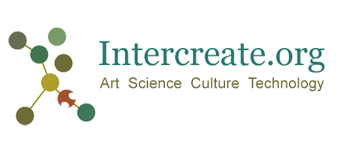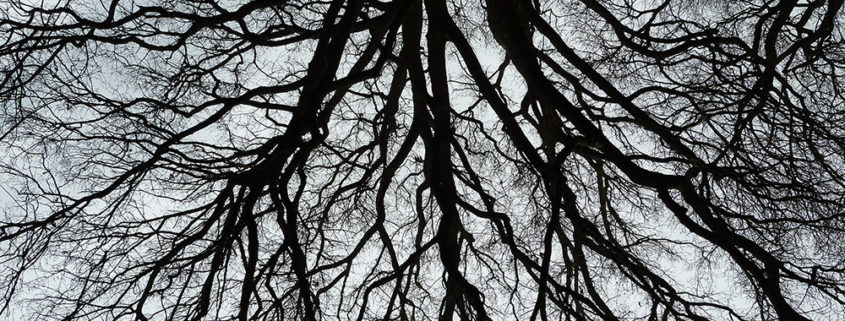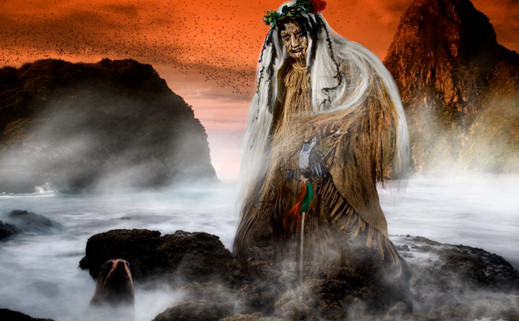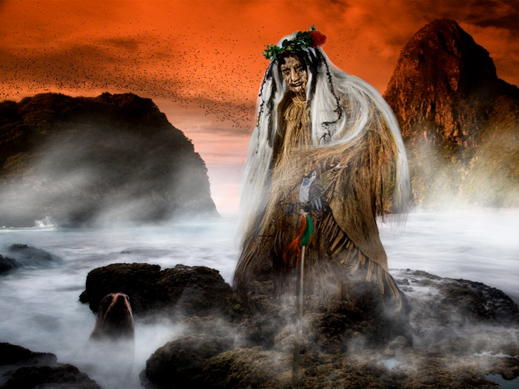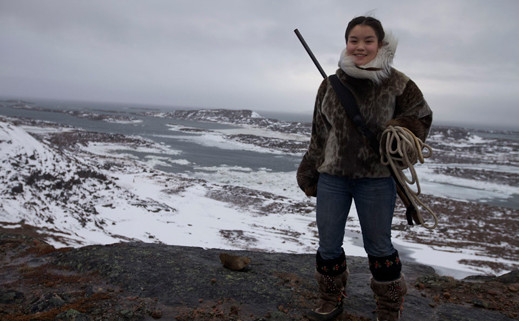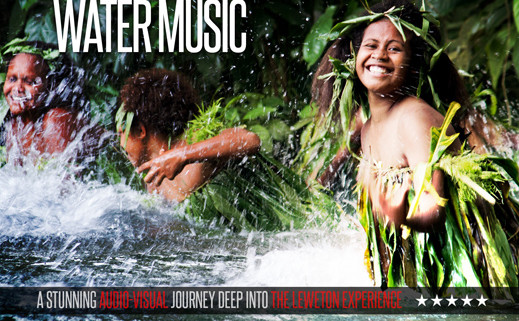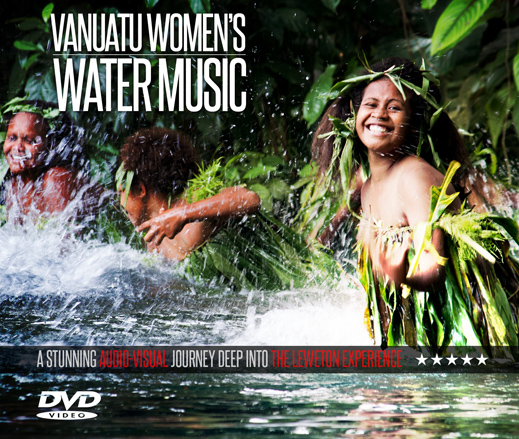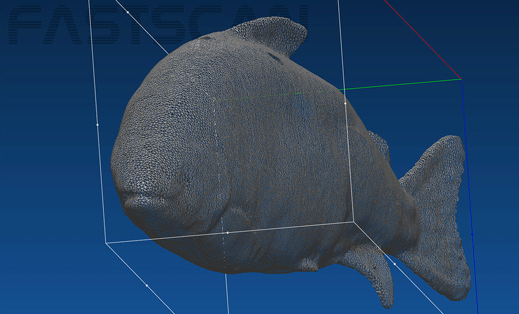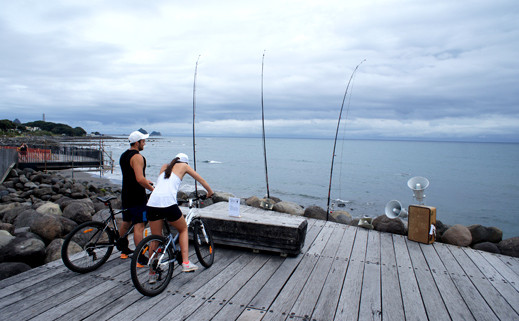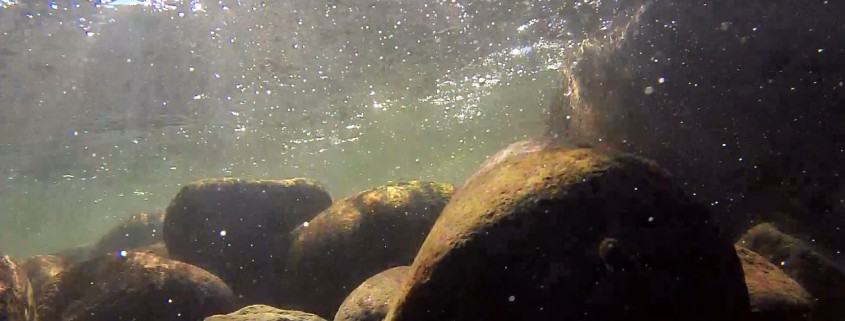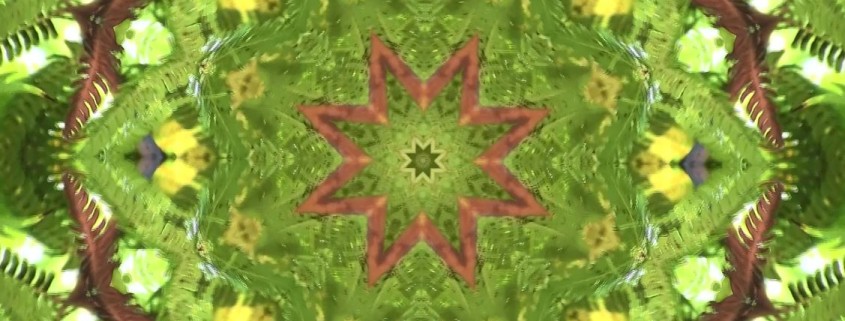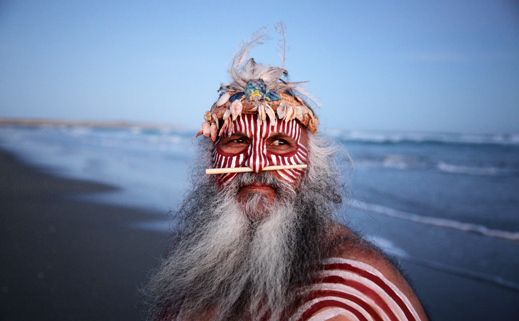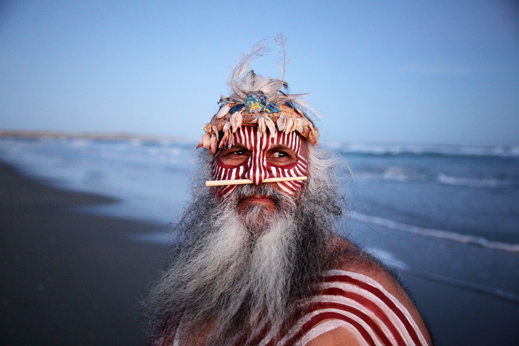A list of projects selected for SCANZ 2015:water*peace
Night Projections at SCANZ 2015
/in 2015 Projects, 2015 Schedules /by Ian ClothierFour artists will present video projects at night in Pukekura Park, starting 9pm on Friday 30th January on the Boat Shed Lawn. The evening runs until 11pm. The evening commences the SCANZ 2015 International Celebration of Water and Peace, with events starting at the Huatoki Plaza on Saturday 31st of January and Sunday 1st February starting at 11am and running till 4pm.
The night projection artists are:
Inahaa Te Urutahi Waikerepuru
Warrior Mountain of Peace
This montage is based on the birth of our landscape of Aotearoa and the greatest love story ever told, that abides deep within the caverns and crevasses of Papa-tu-a-nuku.
Jo Tito
Project Peace Mandala
This work has been created from photographic images of nature. Mandala is a Sanskrit word for circle, it is a symbol that has resonated with me all my life and in my journey as an artist.
Claire Brunet
Susan Fryberg
Convergence
This work is an interactive night time projection in which the concept of water and its sustainability is investigated, through a convergence of 3D digital objects with recordings of water and voices.
Allan Giddy
Night swimmer
A Sisyphean swimmer toils relentlessly against the current. His single stroke, trapped in an endless glitch of video, pulls a moment into a string of moments, into a night of moments.
For longer project descriptions by the artists read more here.
Additional works created by SCANZ participants will also be viewable on the night.
Two Nunavut artists to take part in SCANZ water and peace
/in 2015 Projects /by Ian Clothier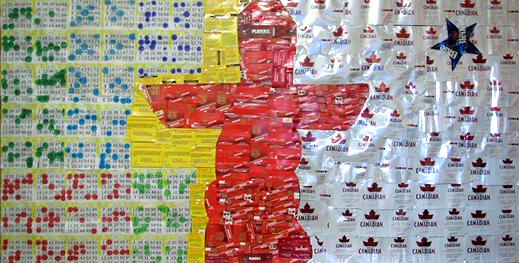
Tungilik challenges views on Inuit art – the work above, selected for the Venice Biennale, is a poignantly comic take on the territory’s addictions—gambling, smoking and drinking
Intercreate.org, Te Matahiapo Indigenous Research Organisation, Creative New Zealand and the Western Institute of Technology at Taranki are honoured to host two Nunavut (Canadian Inuit) artists to the SCANZ residency: Jesse Tungilik and Stacey Aglok MacDonald. They will attend the SCANZ2015:water*peace international celebration of water and peace in Nga Motu New Plymouth from January 17th to February 1st. Both embrace the difficult and complex questions of what identity means in current society.
The Nunavut Territory is the newest territory in Cananda, and one of the largest and least populated regions in North America and Europe. Nunavut have lived there for at least 4000 years. The land claims agreement with the government of 1992 was ratified by 85% of Nanavut and the territory officially established in 1999.
Both artists will have work on show on the final weekend of SCANZ, Saturday 31st and Sunday 1st February in Huatoki Plaza and Puke Ariki landing. Aglok MacDonald’s video work will be projected under the road at the sea end of Puke Ariki landing, and the site for work by Jesse Tungilik will be revealed on the day.
Jesse Tungilik is a Pangnirtung, Nunavut-based bench jeweler and contemporary Inuit artist who grew up in several different communities in Nunavut and the North West Territories. His first foray into the Inuit art world was when he was just eight years old working after school at the Matchbox Ceramics Gallery in Rankin Inlet, and had his first show a year later at a bank lobby in Yellowknife, NWT.
He then took a hiatus from art to pursue education and his other passions such as travel and environmental and cultural advocacy. These passions brought him far and wide from the vast ice fields of Antarctica, to the Moai of Easter Island to the Steppes of Mongolia. He has worked extensively with indigenous people’s organizations both professionally through positions with the national Inuit organization Inuit Tapiriit Kanatami, the National Inuit Youth Council, the Arctic Council Indigenous Peoples Secretariat, and personally; participating in Indigenous youth exchanges in Norway and Finland.
Jesse rekindled his love of creating art in his mid-20s working at the Aayuraa Jewelry Studio in Iqaluit where he was mentored by master artist Mathew Nuqingaq. Jesse has drawn inspiration from his many adventures and encounters with indigenous peoples from around the world to create art that reflected his experiences. He has strived to push the boundaries of his creative practice by experimenting with many different art forms and media. In addition to the jewelry that he makes primarily out of silver, ivory, baleen and muskox horn, he has painted public murals, made mixed media sculptures, created political assemblage pieces, dabbled in charcoal and oil pastel portraiture, and has written short fiction stories.
His work has been exhibited at Nunavut Arts and Crafts Association Art Festivals in Iqaluit, Nunavut and at the Great Northern Arts Festival in Inuvik, NWT and has also been featured in publications such as Up Here Magazine and Northern Public Affairs Magazine. Currently, his focus has shifted to arts administration working for the Government of Nunavut Department of Economic Development & Transportation as Intern Manager of Cultural Industries.
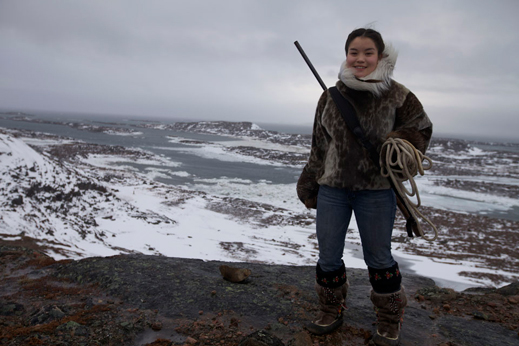
This is a production still from ‘Throat Voices’ produced by Stacey Aglok MacDonald, which addressed complex issues of culture and identity, embracing Nunavut identity and including issues that are pertinent to New Zealand – youth suicide for one
Stacey Aglok MacDonald is originally from Kugluktuk, a small community in western Nunavut. She first became involved in filmmaking in 2004 as a production assistant and character on the documentary series Staking The Claim: Dreams, Democracy and Canadian Inuit, which is now used as educational curriculum in high schools across the Nunavut territory.
Other projects that she has led have included training youth in over 20 communities across Arctic Canada in film production and editing, and producing workshops for youth on Acting and Performance as well as Inuvialuit Drum Dancing.
In 2012, Stacey won a Canadian Screen Award for Best Short Drama for her 17-minute live-action film Throat Song. She has produced a number of music videos in collaboration with other Nunavut-based filmmakers and musicians including The Jerry Cans and The Trade Offs. Today she is producing and directing two Inuktitut television series which are broadcast on the Aboriginal Peoples Television Network, one of which is a popular youth-oriented television show called Qanurli? and the other is a call-in talk show called Qanuq Isumavit.
She has a feature film in development and plans on writing and directing a new short film in the coming year. Stacey currently resides in Iqaluit, Nunavut with her 6 year old daughter.
Vanuatu Women’s Water Music
/in 2015 Projects, Featured /by Ian ClothierA special feature of SCANZ2015:water*peace is the Aotearoa New Zealand launch of the Vanuatu Women’s Water Music DVD. The Water Music dance involves the performers standing waste deep in the water, and slapping the surface as part of the dance. This is performed by the Leweton Cultural Experience. They are based on the remote northern islands of Gaua and Merelava in Vanuatu, and live in a village in Espiritu Santo where they present, share and maintain their unique cultural traditions and practises across cultures and generations.
Wantok Musik and Intercreate.org in association with Te Matahiapo Indigenous Research Organisation, Creative New Zealand, TSB Community Trust, the Western Institute of Technology at Taranaki and the Intercreate.org community are honoured to host two members of the Leweton Cultural Experience, Sandy Sur and Prim Rose Wari who will attend SCANZ2015:water*peace, and take part in the International Celebrations of Water and Peace from Friday January 30th to February 1st in central Nga Motu New Plymouth, based around the Huatoki stream walkway and plazas. The SCANZ residency begins on the 17th of January with many projects presented on the celebration weekend.
Following is an account of the development of the water dance.
The History of the Magical Water Music
My name is Warren Wevat Wessergo. I come from a village called Dolap in West Gaua.
All of the women from the Banks Islands, in the north of Vanuatu, can make music by splashing the water. This is very common. But this is just a standard sound all over the islands. However, in 1974, my aunt, Elizabeth Womal Marego, with her daughters, and my mother, Zalet (Charlotte) Hilda, with my sisters, they all came together to discuss the development of the ‘sound of splashing water’ into something more like ‘water music’.
The reason that these women decided to explore the idea of developing the ‘water music’ was that they had noticed the people on yachts displayed an increasing interest in the practice. Indeed, one of these yachtspeople had given a “Visitors Register” book to a Catechist on the island by the name of Patteson Worere. Patteson kept the book in the church and all the visiting yachts to Dulap were asked to nominate someone to enter the name of the yacht and their signature into the Visitors Register.
After all the discussions, Elizabeth, Zalet and their daughters chose Rovan Womal Marego to be the first leader of the Water Music group. Rovan worked with the women to codify and name the various sounds, beats, rhythms and chords of the water music. This is important because no one had ever given a name to the sounds of the splashing water before. Before they could create new sounds, they need to name the existing sound. So Elizabeth and Zalet decided that the first task for Rovan was to lead the group through the process of naming the existing sound from splashing water – the sound that was practiced all over the Banks Islands. They named this vus tuwal.
Then they named the four other ‘beats’ that they had just created:
kor nē-bē – the sound of rainwater falling over stones
ne kia – the sound of dolphins flapping their fins on the water
nē-rē – the sound of rainwater falling on leaves and thatched roof
vus ero – the sound of people chasing and shepherding fish into traps and nets
Elizabeth and Zalet and their daughters spent the rest of the year practicing the newly created beats and rhythms close to my house in the water at Lembrig Spring. Then in 1975, some more yachts visited West Gaua asking to hear the Water Music. My sister Martha Rowon was practising the new Water Music at the seashore. Some yachts in the area could hear the sounds that she was making. Intruiged by the strange tonal qualities of the music, the yachts searched for the source of the sounds. Eventually they found Martha on the reef and some of them were so impressed with the music that they presented Martha with gifts of clothes, shoes, and jewelry. This was the first instance of someone attracting visitors especially to see and hear the Water Music.
In August 1975, another yacht visited the area. These visitors also brought with them a camera. Many of the villagers were excited by the camera and the opportunity to have their photo taken. In all the excitement, a small boy was washed off the reef by a large wave while his parents were distracted by the camera. Eventually his drowned body was found and brought ashore. The local pastor at the time was a cousin of Martha. His name was Father Marcel Wewot. Father Marcel prayed for the boy to bring him back to life. Miraculouly, he was successful so he baptized him Wewot Lembrig. So now, every year during yachting season, the daughters of Elizabeth and Zalet, and the daughters of their daughters, they go down to the reef at Lambrig Spring and entertain the visitors with the magical water music. At the end of their show, the owners of the yachts hand over bags of second hand clothes, shoes, and other gifts and everyone remembers the miracle of Wewot Lembrig.
Time went by without much significant change. [There was plenty of migration of people from Gaua and neighbouring Merelava to (and from) Luganville, on the island of Espiritu Santo.] Tourists would come on yachts during the dry season and the women would perform the water music in exchange for some gifts. Then in the year 2000, Mr Sandy Sur brought some tourists to Dulap on a cruising yacht. But this time, the tourists were so impressed that when Sandy suggested that the tourists pay the women with cash, the tourists were happy to oblige. And so this occasion marked the transition from an amateur folkloric performance into a professional, revenue-raising, tourist attraction. The word passed around amongst the other yachties and tourists that there was a magical water music performance to be seen in Dulap and so many other tour companies and independent yachties started to come to Gaua. And so this occasion marked the transition from an amateur folkloric performance into a professional, revenue-raising, tourist attraction. We had begun the process of commercialising the water music.
A few years later in 2003, the Provincial government of TORBA held an Arts Festival in the village of Aver at North Gaua. The women from Dulap made their way to Aver for the Arts Festival and for the first time, performed the new water music for the Vanuatu public (as opposed to tourists). The people of North Gaua and the other visitors were amazed at this new water music. There were two English volunteers teaching at Losalava school at the time and they helped the news of the new water music performance reach the community in Port Vila. This was the first time that Tom Dick from Further Arts had heard of the water music, but his ethnomusicologist friend Monika Stern, had recorded the water music in Merelava some years before. Tom and Monika presented the idea of the water music to the Head of the Delegation of the European Union, Nicolas Berlanga Martinez. Nicolas was also very impressed with the water music and he arranged for some of the family members to travel to Zaragoza in Spain for the World Expo of 2004.
Then Sandy Sur organized a meeting of the Mwerlap-speaking diaspora of people from Gaua and Merelava who were living on a block of land in the Sograon (Showground) area just on the fringes of Luganville – the “northern town” as it is known by residents of the capital, Port Vila, in the south – or “Canal” as it is known by locals of the island of Espiritu Santo. By this time, many of the original innovators of the water music from 1974 were living in Luganville. Through this meeting Sandy galvanized the family around the performance of “water music”. Sandy knew the potential of the cultural practice of the water music as a tourist spectacle.
During the course of the meeting several different activities were suggested as being able to be presented as a package to tourists. These activities included traditional dance (terrestrial) of men and women respectively – and a communal dance featuring the whole community. Warren was adamant that the water music had to be a feature of the package of activities that were presented to the tourists. It was important that this will of Warren be clear to all as it is Warren’s mother and Aunt and sister who were the original innovators of the water music in 1974 in the nasara of Wevat Wessergro, Saint Bartholomew, West Gaua. To this end, the meeting continued long into the night, and also moved down to the shore where the men and women could stand in the water and visualize the water music, and test and demonstrate the possibility of its transmission. In the end, Hilda Rosal Wavales Warren, Warren’s wife, was appointed to the role of Maestra (Creator, Composer and Teacher) of Water Music for the Leweton community.
Hilda worked very hard to develop the water music and to engage all the women and girls in the community. It is largely due to her hard work that we can say that the Leweton Cultural Group has become so popular and that the Vanuatu Women’s Water Music is known around the world. Hilda created eight more water music chords which are totally different to the original sounds and the other five beats listed above, and each of the eight new ones have their own names and meanings. These names and meanings were developed through a collaborative process involving the full community going to the ocean’s edge to listen to the women performing the sounds and the community would listen to the music and share their thoughts and feelings as to the meaning and names of the sounds. Chief Colin, Kuber, Judah, Sandy Sur, and other chiefs and community leaders were there. All the participants had a pen and paper and they wrote down their ideas for the names and meanings of the songs: sometimes the meaning of the song was attributed to the ocean, other times to the sky or the land. All of the names and meanings were assigned in the Mwerlap language which is the language of Merelava and East Gaua, and each of them are a product of Leweton.
This information has been presented by Warren Wevat Wessergo from West Gaua. This is his story. Additional information has been compiled by Sandy Sur and Thomas Dick. Translated from bislama by Thomas Dick.
Digitized 3D Objects and Audio Signal Convergence by Claire Brunet, Susan Fryberg and Toby Gifford
/in 2015 Projects /by Ian ClothierRecordings of water, specifically chosen to make audible water’s numinous quality, are modified through signal processing mechanisms that are derived from digitised 3D objects. These will be played back along a public waterway, through solar powered speakers, as part of the SCANZ temporary public art works section. Projections of 3D forms data using a portable power generator are linked to the concept of water and its sustainability, and supported by sound. A stretched white net will be used as a projection screen.
Through exploring the ways in which the data from the digitized objects and forms are transformed and translated from nature to code to signal processing mechanisms, we investigate the plural condition of the digital medium. The work explores both interactions with digital data impact on ar1ists’ perception and interaction with the natural environment and foster a plurality of creative approaches. From a research/creation experiential mode of inquiry we investigate the ways in which the digitalisation of spatial, temporal and sonic modalities, impacts on interdisciplinary artistic concepts.
The Project team comprises the following artists: Claire Brunet, sculptor working with 3D digital technology who is completing a PhD on the impact of 3d digital technology and technological environment on sculpture installation art; Susan Frykberg, a composer of electro/acoustic music who often combines feminist, spiritual and social ideas in her work, and Toby Gifford, a music technologist sound designer and acoustic musician who has completed his PhD in interactive music systems, will offer technical support. The project we propose for Water and/or Peace residency and temporary public work (residency with public exhibition project) presents a multidisciplinary approach to the ways in which artists and the audience adapt to a creative experience.
The project combines music and sculptural forms data inside a digital context where sound, space, time and materiality are explored through a digital medium. It addresses an ecological and trans-national discourse, referencing water as an essential element of life. Original recordings, images and 3D objects are sourced from the physical space and location of the three artists – Canada, New Zealand and Australia. Sonic material from recordings of waters will be modified through granular synthesis and digital signal processing, through data obtained from a digital representation of manipulated data forms.
A number of software platforms will be used for this including Max and Ableton Live. Water sounds, changed by the data obtained through scanned elements from nature, parallel the interrelationship of the fish and water. Solar powered speakers will be used to make audible the sonic material.
Image projection will include a digital representation of manipulated data of a salmon form. The fish is an iconic figure of Canadian marine life and is also present in New Zealand and Australia. It is a visual metaphor for the complexity of the living condition. As a way to express the paradoxical aspect of life, the fish species selected also symbolizes the strength of nature’s instinct for survival. On site access to a portable power generator will supply energy for the data projector, allowing projections of 3D forms in nature. A stretched white net will be used as a projection screen.
This sound/projection multimedia installation project will enable us to explore new ways of looking, inventing, imagining and expressing past, present and future perceptions and interactions witl1 tl1e world in which we live. The main focus of our work is nature, transformation and change, through which we address ecological issues via the theme of water.
New Plymouth spatial interventions by Allan Giddy and team
/0 Comments/in 2015 Exhibition, 2015 Residency, 2015 Symposium, Peace, SCANZ 2015, Water /by Ian ClothierThree artists resident in Sydney but originating from England and New Zealand will work for two weeks with the New Plymouth central city area to enliven it for one or two evenings prior to the SCANZ walking symposium.
Our goal will be to “play” the city spaces using light, sound and architecture to provide novel artistic responses to the SCANZ theme in the areas surrounding Huatoki Lane. The projects will be undertaken to trial technical delivery systems for art with an aim to better directly communicate with a populous outside the traditional white cube.
Geo-specific responses to the site will be played out in the public arena and the installation of the works becoming a series of public performances/events.
The Sydney team is keen to work with colleagues from Glasgow School of Art and renowned German artist and curator Christine Biehler in what we hope will be the most striking set of artistic interventions yet seen in Taranaki.
The plan is to spend a two week residency in 2015 scoping and “fitting” our installations to sites within the New Plymouth CBD before exhibiting work in a group display of public interventions.
This will be done after more than a year of preparations that began with a site visit by group convenor Allan Giddy in Nov 2013. During that visit potential sites were identified and the group was sent images and historical information to develop interest. Contact was also made with a Maui Gas platform in an attempt to get sets of used battery systems to power remote projects (without recourse to the electrical grid).
Water is central to the site (between St Aubyns and Ariki) and the works focus their visual and sonic interventions around these features. Upstream water connects to Mount Taranaki and the Land while downstream to the Sea and the oil fields. Topics include water rights, water management, tracing the creek, carbon fuels, renewables, pollution, boundaries and ownership.
In this context installation itself becomes a performative act with artists working within the site of an intended audience. In effect the show, starts with the residency as the body of artists present in the community, has an impact in itself and further connects the site to the community and its history. That said this group will be convened with an eye to visual impact on the opening night and observers should expect a quirky and diverse range of work to emerge.
Water and Peace, by Sharmila Samant
/0 Comments/in 2015 Residency, Peace, SCANZ 2015, Water /by Ian ClothierPublic art should function within the public realm. Its critique negotiates a series of overlapping issues extending from urban hierarchies, diversity, to operations of power. As a cultural practitioner I prefer to address these questions through the agency of art in non-art realms and bring forth aspects of livability and sustainability within a community through user-centered strategies of participatory practice. Such a discourse necessarily engages with horizontal relations, of talking with someone rather than to (or at) them. It is in this way that praxis can be thought of as human potential, a process of opening, of transformation and mutual reinforcement.
For SCANZ2015, I propose to work within a community were water has a distinct significance either in terms of ancient/ indigenous knowledge, cultural values, metaphysical connections, or political/social contentions.
From my past experiences of working with commmunities and in new/ unfamiliar locations to come with a preconceived project when approaching a community that one is hoping to collaborate with is not always real or seems like a ‘top down approach’. I prefer a serendipitous process that will evolve with discussions between the community members, curators, and me that can shape the outcomes of the project in accordance to the thoughts of all involved through discourse while exploring ideas of exchange, accessibility and authorship.
To be in dialogue with others is to find meaning in one’s experience. Encounters of this kind envision a world, which is comprised of subjects rather than objects and such subjects are equally capable of being co-creative and making shared meanings.
Living in the world that we are, that is fast depleting its resources, interdependency and connectivity have become key issues for survival, but are regrettably virtual. ‘The next world war if fought will be over fresh potable water’ is an ominous prediction that is being reiterated by many a scholars and organisations. Privatization of water, change in patterns of land use, sustainable development and circumventing greed for a shared future, peace and respect for all living beings is what we as communities need to urgently address. The importance of water has a shared reverence across cultures. Civilisations have flourished around water bodies both historically and in contemporary times. In the Vedic philosophy water is one of the panchamahabhutas- the same laws of nature which govern the elements and their interactions in the world must necessarily govern the elements within our bodies.
‘Changing Currents’ (2006) was a multi media, cross- disciplinary event focusing on the various water related issues in the urban and rural environments in India. This was conceptualized and executed by Open Circle in collaboration with the Narmada Bachao Andolan and the National Alliance of Peoples Movement was a knowledge gathering project where politics of water were addressed ranging from pollution, conservation, irrigation, building of mega dams and their detrimental effects on environments and displacement of communities, coastal water management, fisheries, depleting of water tables by multinationals to water rights.
‘Mrigajal – The Mirage’ (2010) scrutinized the uses of place and site as they relate to questions of identity, memory and civic issues through the political paradigms of water. This intervention was part of ‘The Fluid City’, a public art project co-curated by the Mohile Parikh Center and ArtOxygen, which invited artists to respond to the paradoxical role that water plays in the city of Bombay/Mumbai, raising questions of excess, desire and denial of this precious natural resource and urban futures. I invited Dr. Amar Joshi, a water diviner and geologist, this intervention employed both divinatory and scientific techniques to locate existing water bodies that still lie under the city, now veiled by buildings, roads, slums and encroachments. There by interrogating the history of water bodies and its unequal distribution in the city while marking two contrasted sites: the elite area of Kala Ghoda (Fort) and the disadvantaged slum area, Annabhau Sathe Nagar, Mankhurd.
One of my recent projects ‘The Wasteland’ (2012), in Taranaki on a residency, outside my personal geographical context I had proposed to look at ancient mythologies and whakapapa (genealogies) evoked through water as a sacred element in Maoridom. Centred on the Waiwhakaiho river, I tried to pursue cross-cultural encounters with local kaumatua and tangata whenua to record personal relationships and histories that connect ancestry with landscape, comment on present-day constraining of traditional values and knowledge, and attempted to warn of impacts our actions have for our land and futures.
In the current project in Wales, I looked at the water as a means of provocation and the strength of dissent. The village of Capel Celyn in the Afon Tryweryn Valley, North Wales , was ( despite much resilient opposition) demolished then flooded to create a reservoir to supply Liverpool with water. This immense incitement in 1959-65 changed the emotional and political landscape of the Welsh people for ever. Many, stung by the betrayal of one of the last remaining heartlands of Welsh culture and Welsh language, reacted politically. The act roused nation wide protests and reassertion of Welsh identity following this welsh language was introduced in all schools in Wales the public signs were bilingual.
Reverie, by Kate Richards
/0 Comments/in 2015 Residency, Nature, Peace, SCANZ 2015, Water /by Ian ClothierI am proposing to undertake practice-led research into the potential for audiences to have a meditative experience – to find ‘peace’ – when viewing water.
Water is a universal metaphor for consciousness, perception and feeling. Perhaps because it comprises a large part of our human body, and is essential for life, water is not only fundamental to our actual existence, it also represents our inner lives. With its unique combination of constancy/ubiquity and infinite variance, water is a cypher for many layers of human experience.
During dreams, we use water to communicate our state of consciousness to ourselves. Many people will be familiar with the well documented metaphors that our unconscious uses to communicate our emotional state to our consciousness, through dream affects, scenarios and symbology. Clear shallow water represents a clear and unproblematised emotional state; pounding, relentless and dragging surf suggests we are finding times emotionally ‘rough’, a situation is dragging us down, and under; turbid, unappealing water might communicate that there are aspects of our current emotional state that are clouded, polluted or stagnant.
Metaphorically, water asserts itself in every culture as a symbol of abundance, transformation and depth potential, in the stories and shapes of water gods, goddesses and creatures of all kinds – some personifying the dangers of visiting ‘the depths’, others celebrating the bravery and spirit of those who do. Some – like Neptune of the western pantheon – represent both the beauty and intensity of grand illusion, and the crashing depths of dis-illusion.
Yet behind all these centuries of cross cultural symbology, myths and meta-narratives, lies the subtle but constant variance of water – influenced by turbidity, surface tension, light refraction and angle, amongst other things. These characteristics of variant invariance* make water a perfect medium for an exploration of “immersion”. I define “audience immersion” – a hot, over-used term – as that state that can potentially arise out of the absence of excessive variance of information. First, we know that while there is a threshold for stimulation, there is no threshold for perception. So, if people are exposed to a situation which is relatively free from constant stimulations arising out of difference (e.g. changes to intensity, pitch, dynamics), we can explore the extent to which variance in the ubiquity of water, has the potential for heightened perception in the absence of excessive stimulation. As James Gibson said – to perceive the world is to co-perceive oneself, so if one’s perception is of peace in the form of subtly changing water, then one’s co-perception of oneself would also be a sense of subtle change yet constancy.
During the residency I will explore these ideas; iterative with this research, I would love an opportunity to develop a video projection outcome to test and advance my ideas with the SCANZ audience.
* James J. Gibson – An Ecological Approach to Visual Perception, Lawrence Erlbaum Associates 1979-1986
Ringbalen by Ali Sanderson and Ben Pederick
/0 Comments/in 2015 Residency, SCANZ 2015 /by Ian ClothierRingbalin – River Stories is a geo-located documentary that invites you on a journey along Australia’s great Murray Darling Rivers, with Aboriginal Elders from the oldest cultures on earth acting as your guides. It contains dozens of traditional and personal stories and takes the form of a film, an iPad/iPhone App, and website.
This story starts in 2010 during Australia’s worst drought in history. The Murray Darling River was dying. A group of Aboriginal nations united to try to save the river and the life that relied on it by performing the traditional Ringbalin ceremony.
It took them on a 2,300 km journey following the river system, and we captured this historic experience on film. We went along to film what happened. By the time they had finished dancing, the rain was falling, and what followed were the biggest floods on record.
At the SCANZ 2015 residency we would seek to create a geographical cycle of storytelling with local traditional owners and investigate extensions of our current successful work Ringbalin River Stories as an international layer of geolocated narrative and knowledge.
As a part of our residency project we want to take field trips to connect with local traditional owners and investigate their methods of story telling and collaborate to make content such as short films, audio stories and photo stories which we would hope could be presented in a variety of forums and platforms.
Intercreate.org is proudly powered by WordPress
